An explanation of what I'm doing here can be found in my introduction post.
This post is in reference to Part 023 of All PS1 Games In Order.
I've had a bit of a hiatus for the last month, so before getting back into the swing of things let's take a short look at Namco's early contributions to the PS1.
**This post is also featured on my site, fifthgengaming.blog, and can be found here.**
----------------------------------------------------------------------------------------------------
Now that we've looked at Starblade Alpha, we can take a moment to appreciate two separate things. First, I found an unhinged ad booklet for Namco's early PS1 game releases, and I want to share it with the world. I didn't disassemble it for a proper scan because I only have the one copy. Still, the pictures I have should be enough to get the point across. There's no context to make this any less weird, so here it is:
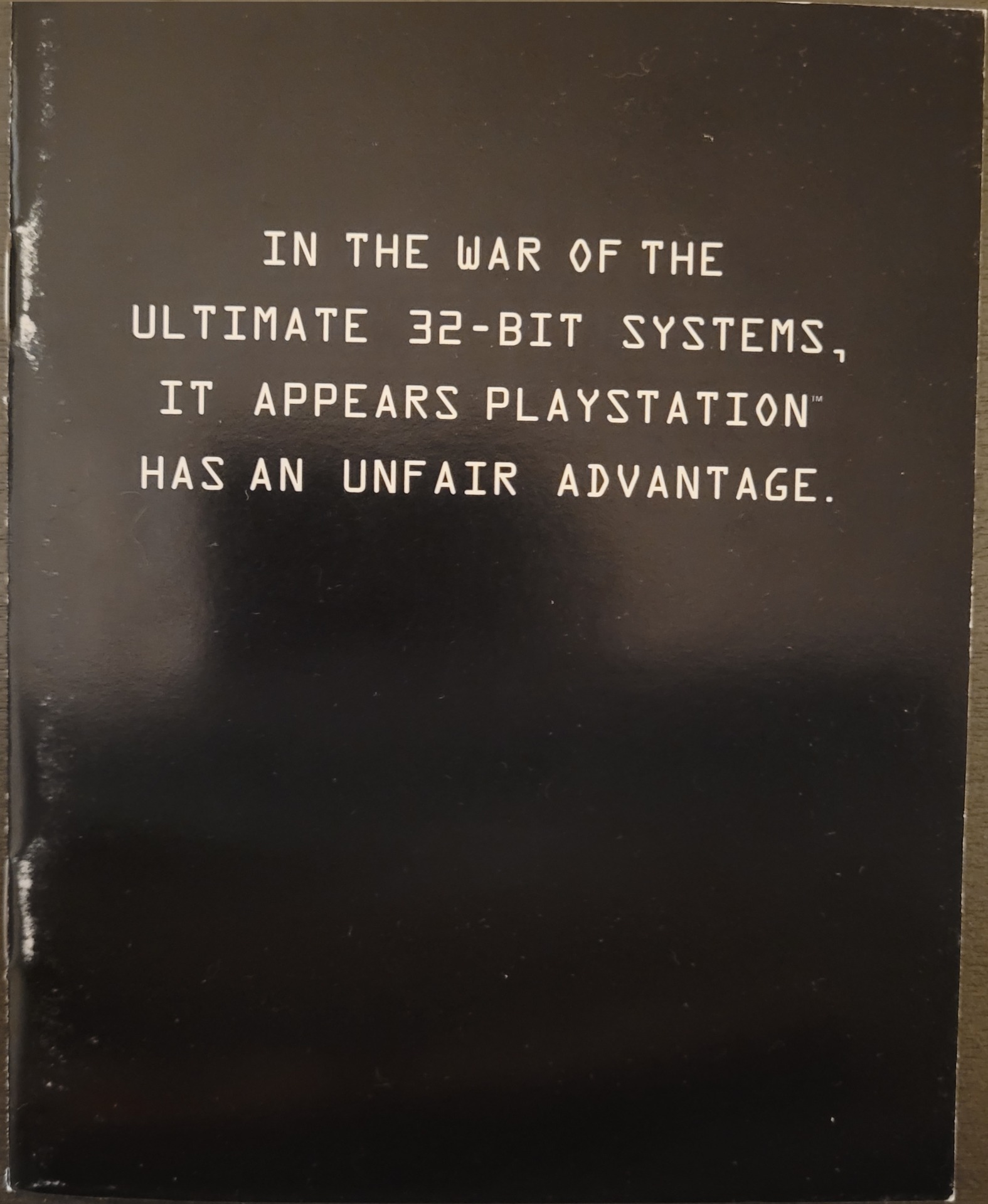
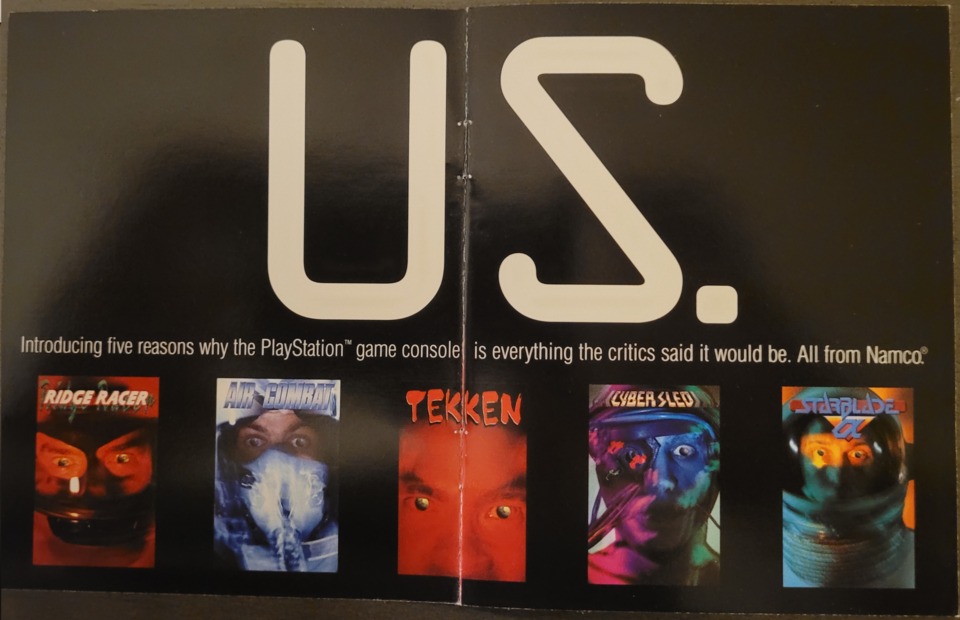
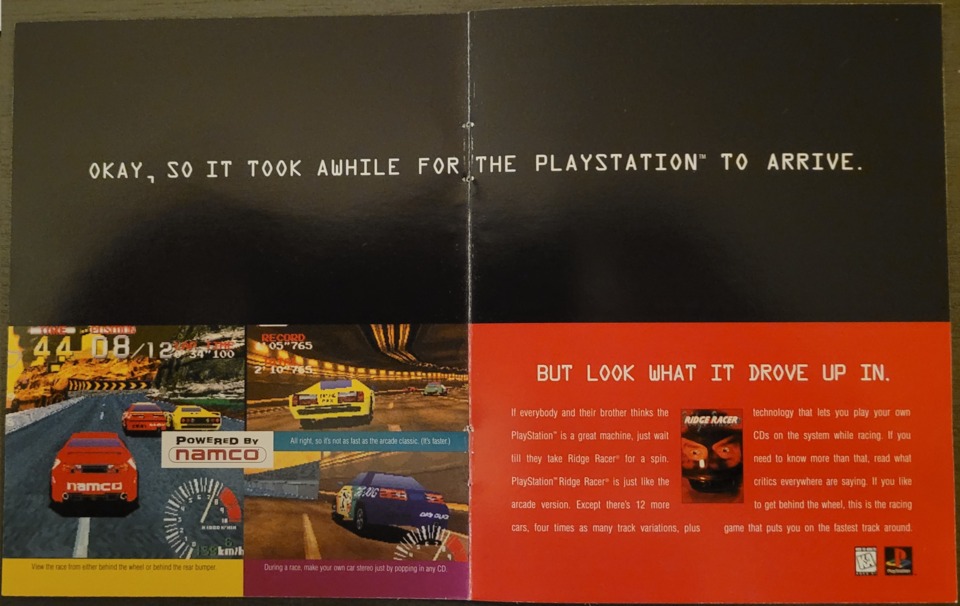
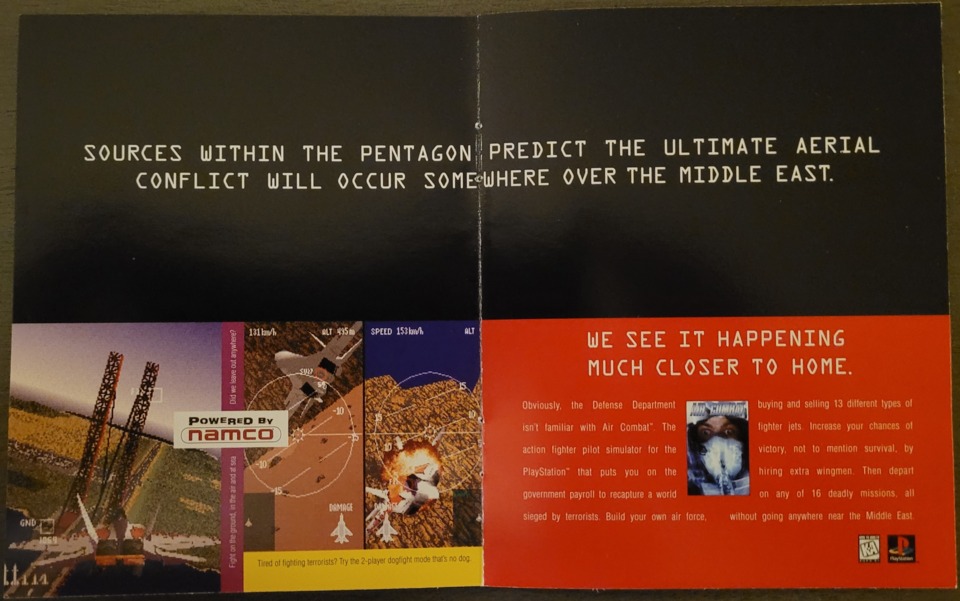
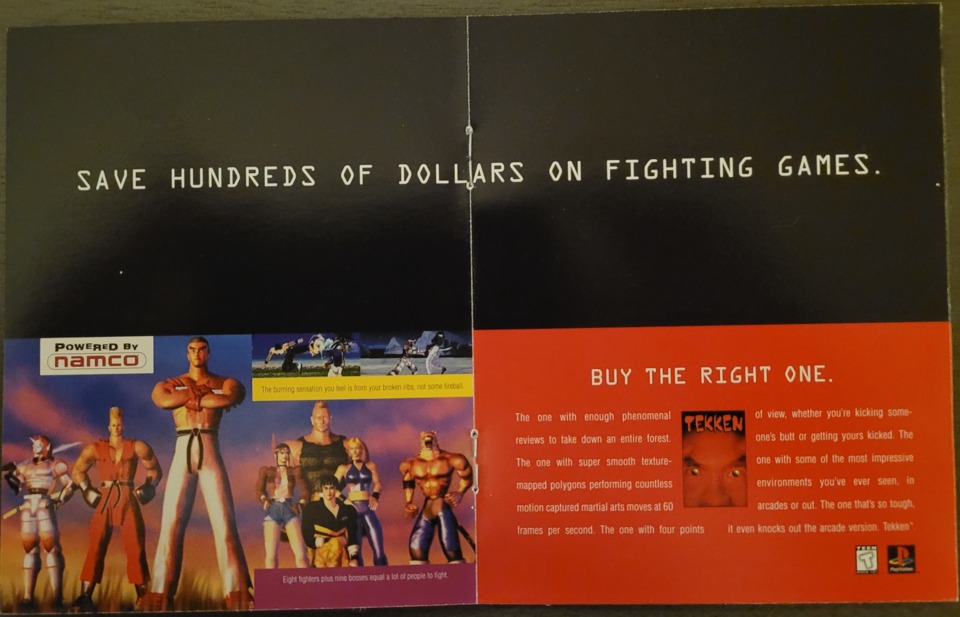
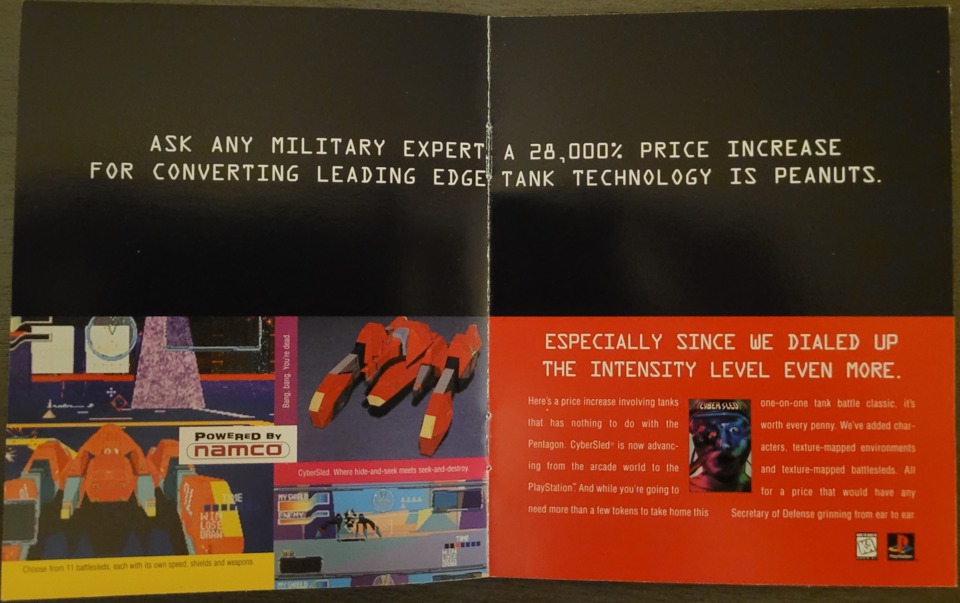
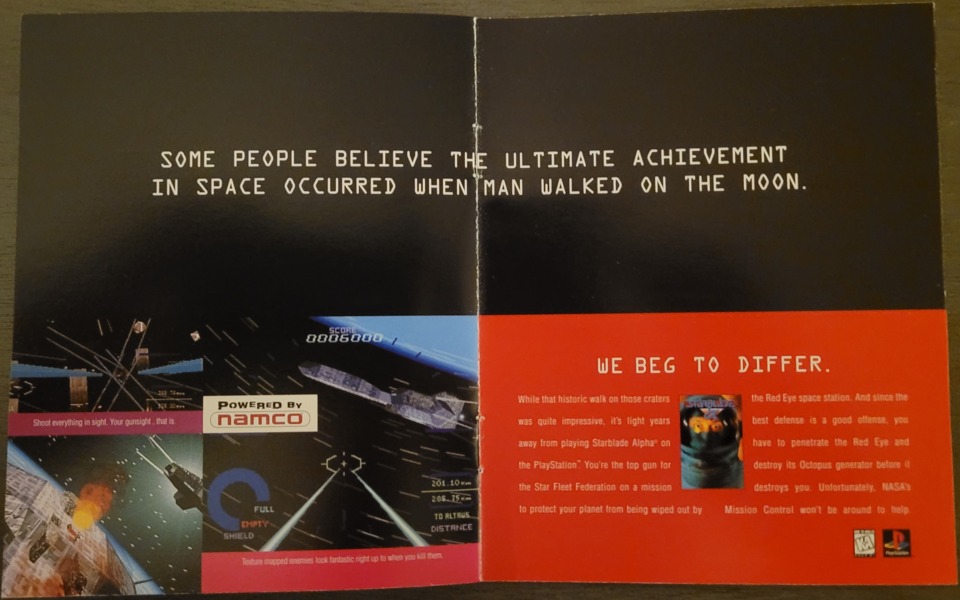
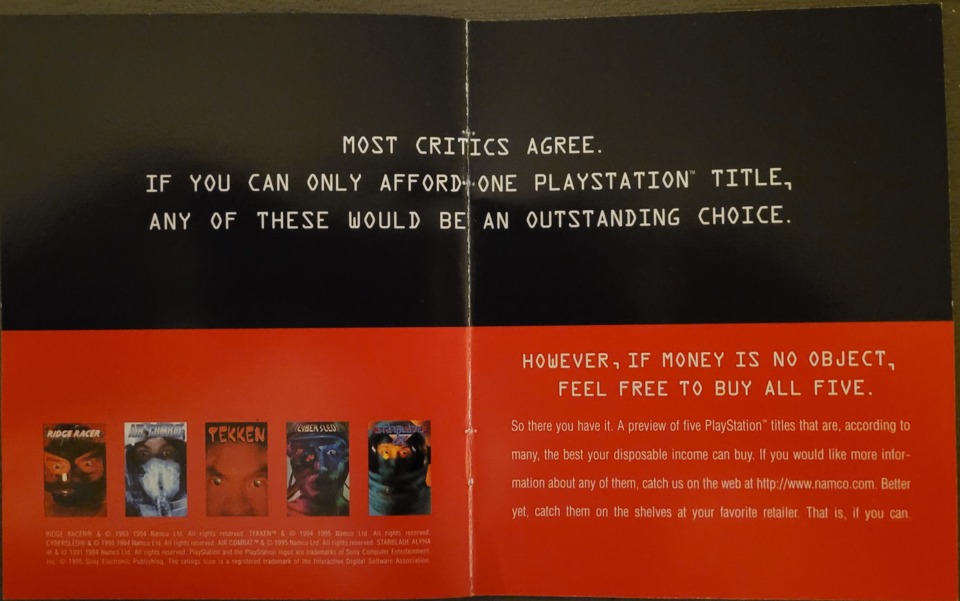
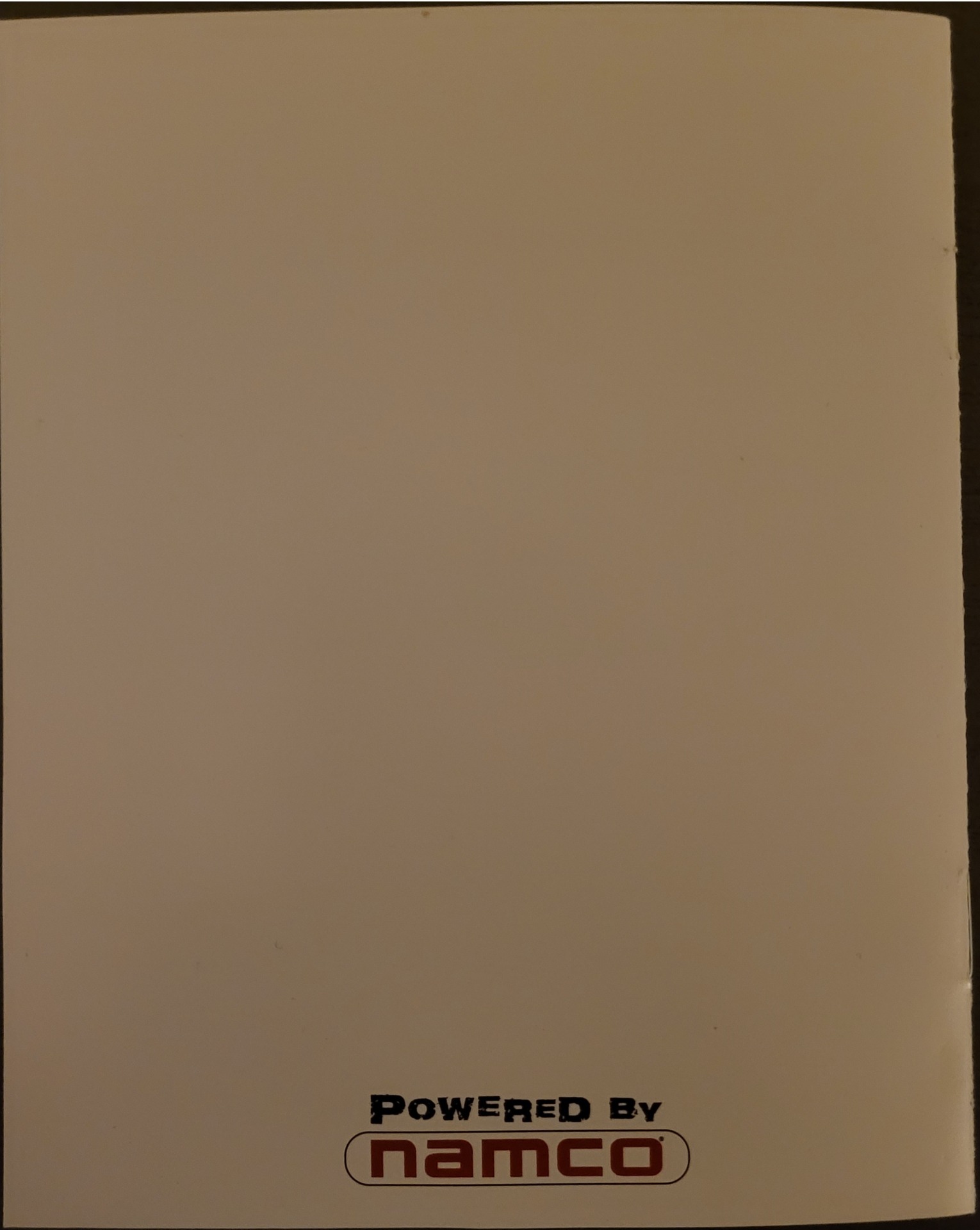
To jog everyone's memories, Air Combat and Ridge Racer were launch titles for the system, which we looked at in Part 001 and Part 004; Cyber Sled came out in mid-October '95, which was covered in Part 006; Tekken came out shortly afterwards in early November '95, as we saw in Part 008; and we of course have only just now seen Starblade Alpha in April '96 with Part 023 of the series.
These five releases, goofy marketing aside, represent Namco's early commitment to the new Playstation brand. All are ports of their notable early 3D arcade games and include the most significant arcade ports that Sony was able to secure for its new system. From this point forward, Namco is going to focus on releasing sequels and classics compilations until the end of 1997. This was something of a first salvo, and it was likely the success of (some) of these games that encouraged Namco to steam ahead with their original developments for the PS1. Tracking the business decisions is a little tricky, as most or all of Namco's games on this console came out 6 to 12 months earlier in Japan than the rest of the world. In fact, every one of these five games were out in Japan before the North American console launch, so their reception in the States likely didn't contribute a ton to the company's priorities.
----------------------------------------------------------------------------------------------------
The second thing that I want to stop and consider for a moment is the Namco/Sega feud that had been raging in Japanese arcades since the 80's. There was a lot of early stuff involving now-obscure arcade racing games, but for our purposes we want to consider how the two companies pushed each other in the earliest years of polygonal gaming.
I don't have much, if any, narrative information about the people or internal corporate politics that would have swirled around the years-long competition. As such, we can only look at the games and some vague sales indications. Of course, the interest here is to look at it in chronological order. We can see the major releases organized below.

It's important to keep in mind that these dates are for the original Japanese arcade releases. We see the biggest back-and-forth in the racing genre, which I've seen some sources claim had been a competition going back to the electromechanical days. When looking at the progression of Driver's Eyes -> Virtua Racing -> Ridge Racer -> Daytona USA -> Ridge Racer 2 -> Sega Rally Championship, we can see the graphical complexity, size, and driving model sophistication noticeably increase from game to game. Now, these weren't the only polygonal Racing games in the early-to-mid 90's, but when considering other entries would have been stuff like Cruis'n USA, we can focus exclusively on these titles without losing too much. The competition between the two publishers led to rapid year-over-year development of the genre, which we benefit from to this day. That feels like an odd conclusion to reach, as both Namco and Sega have long since exited Racing game development. Sega dropped the genre around the time they left console manufacturing, and the Ridge Racer series wouldn't survive the rise of the Simcade Racing genre. So, on this front, we can say that both companies lost, and as with everything else, the ultimate winner was Sony with the Gran Turismo franchise.
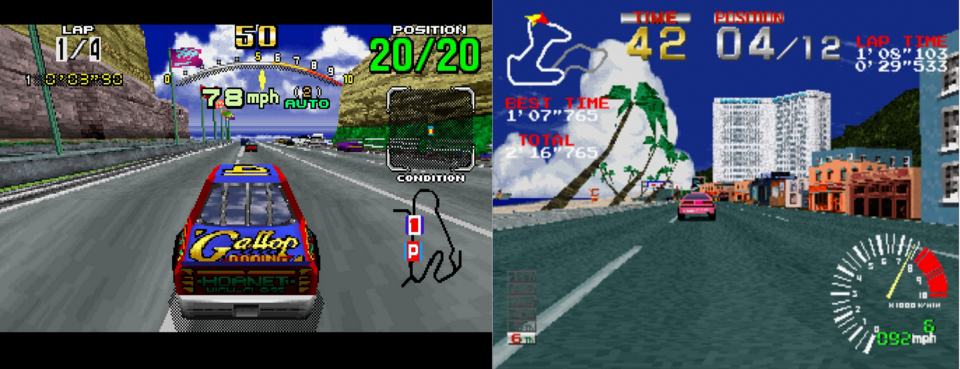
Next, we should consider the 3D Fighting games. The competition here revolved around the Virtua Fighter and Tekken series, both of which would have three entries out before the end of the 90's. Here, we have a clear case of Sega being the first mover and main innovator and Namco following behind. The dynamics between the two was dicey at first, with VF and VF2 being much bigger in Japan while Tekken and Tekken 2 were more successful internationally. The deciding factors seem to have been the success of their console conversions and Sega's general self-defeating business decisions. Tekken had much more personality and was more beginner friendly, which while unimportant to grognard fighting game weirdos, made it a better fit for consoles, and thus the post-arcade future. Also, while it lies far into the future of this blog, the way Sega handled VF3 in terms of timing and design all but guaranteed that the series would fade into obscurity. In fact, the Tekken franchise has been able to survive all the ups and downs which have befallen the Fighting genre and is still going. That puts it over on not only Virtua Fighter, but every other 3D Fighting series that came up and flamed out along the way, such as Toshinden, Soulcalibur, and DOA. Thus, Namco is the ultimate winner in this space, though I need to note that without the bolstering support provided by Sony in the PS2 era, Tekken would have also faded away like the rest.
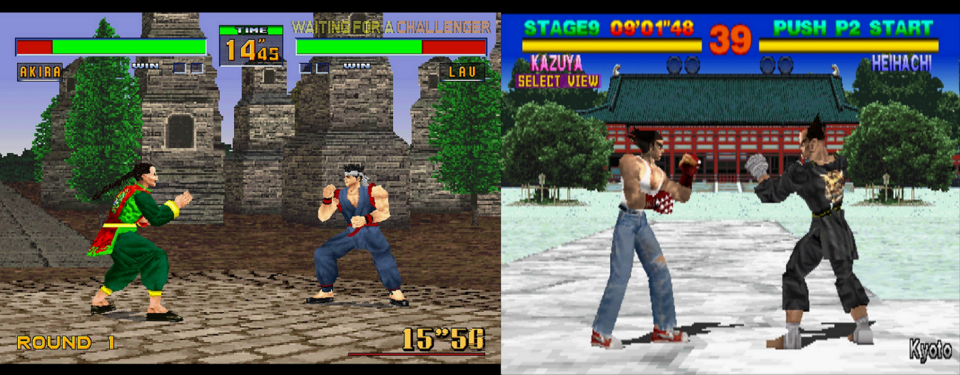
Finally, we need to take note of the polygonal shooters. While Sega got the Rail Shooter genre going with Space Harrier in 1985, it was Namco that went polygonal with the concept. Galaxian³ and Starblade are just an entire weird thing on their own which I'm not going to get into here. Suffice to say that they were a big, and expensive, step forward in the genre. It might have seemed like a dead end at the time if it weren't for Panzer Dragoon in '94. While that was a console-only game, it still served as both a follow-up to the Space Harrier series and a response to all the post-Starblade nonsense Namco had been getting up to. I'm not being too hyperbolic when I say that the Panzer Dragoon series was, and is, the pinnacle of the Rail Shooter genre, which is like becoming king of the trash heap. This was an overstuffed and mostly terrible genre that would be dead by the end of the 90's, with 2002's Panzer Dragoon Orta serving as a kind of eulogy. We could chalk this up as a Sega win, but ultimately everyone lost.
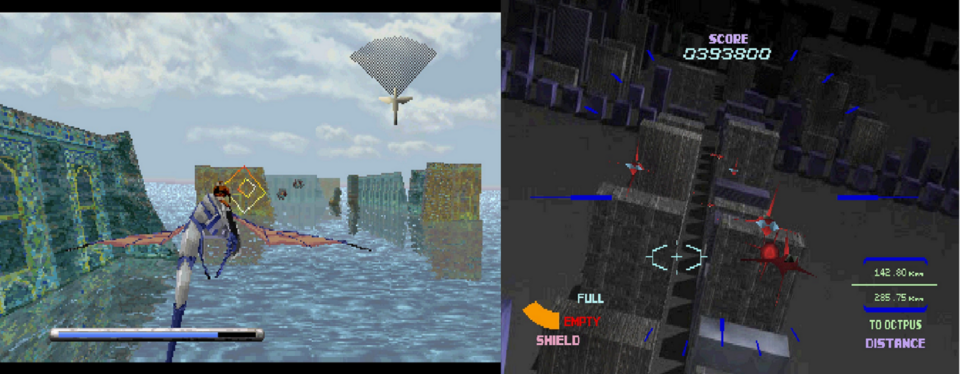
Then there's the Light Gun Shooters. This is a genre that in my mind can only really exist in arcade settings. There have certainly been console ports and light gun accessories galore over the years, but I feel that something is always lost in the transition. Regardless, and despite my own fondness for Silent Scope, the Virtua Cop and Time Crisis franchises represent the high point of the genre. This was also led off by Sega, who took the long-in-the-tooth genre and revitalized it with the first Virtua Cop by using dynamic camera movement, crisp polygonal environments, and an innovative targeting system. Namco caught onto that success and released the first Time Crisis shortly after Virtua Cop 2 came out. I can't speak yet to the relative quality of these games, but I can say that the Virtua Cop games suffered the same mismanagement as the other Sega franchises we've talked about and is now long defunct. Alternately, the Time Crisis series is somehow still going in arcades, with Time Crisis 5 released in 2015 and a sixth entry expected in the mid 2020's. That last point boggles my mind, because those cabinets are big and expensive, but I guess Bandai Namco figured out a way to sustain that low volume business. So, ultimately this is another Namco win.
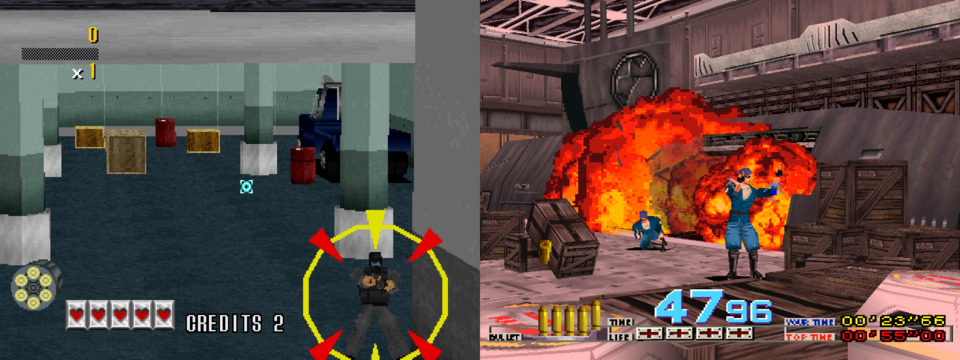
The Namco/Sega competition in early 3D gaming was the main story for the last glory days of arcades, and as such we have seen it filter into the early days of 32-bit consoles. All of these entries shared international shelf space from '95 to '97 as the final decision in the decade old conflict. Everyone can have different preferences, I'm mostly inclined towards the Namco games, but in total, these games were necessary for the fifth generation of consoles to take off. In the end, with the collapse of the western arcade market and slow death of Japanese arcades, both Sega and Namco would lose the fight. Sega would barely limp into the 21st century to eventually recover as just another 3rd party publisher, while Namco would itself only survive through a merger with Bandai in 2005 as the junior partner. I don’t know if there's any big point to take away from the whole story, other than the omnipresent fact that this is Playstation's industry and everyone else has to find a way to live in it.
----------------------------------------------------------------------------------------------------
Next week I will finally put out the long-delayed next installment of All 3DO Games (Kinda) In Order with our second batch of 1994 releases: Soccer Kid, Family Feud, John Madden Football, Jurassic Park Interactive, and Shock Wave.
The week after that we'll catch back up with All PS1 Games In Order when we look at Battle Arena Toshinden 2, Silverload, Bust-A-Move 2: Arcade Edition, and Tecmo World Golf. After that we should be able to return to our normal schedule until we hit the end of June '96.
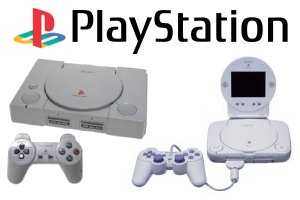
Log in to comment